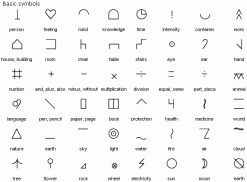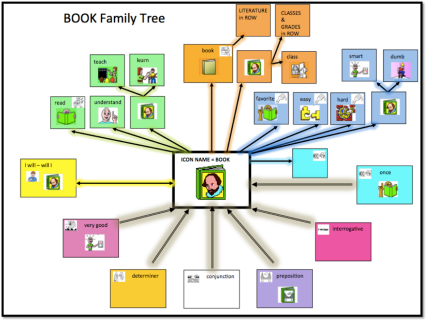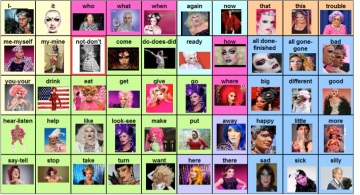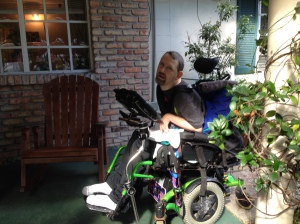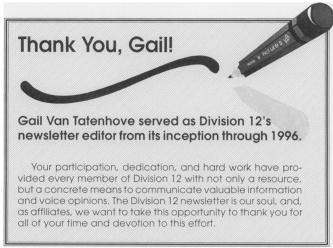When I was making my first communication boards (mid 1970s as a graduate student), no one was commercially selling pictures to use on a communication display. Since I can barely draw stick figures, I had no option but to hire someone to draw me pictures. I found a high school kid with great artistic ability and gave him a list of about 200 common words (ironically those words today would be called core vocabulary) and he started drawing pictures, asking for my input when he was stuck for an idea. It started me on the road to thinking about pictures and how to represent and organize language for people who use AAC.
In 1978, I discovered Blissymbols. Blissymbols appealed to me because they were drawn with systematic rules based on Bliss characters. At first glance, many are intimidated by Blissymbols, but I saw them as a semantic alphabet. Just like with the 26 letters of the alphabet, when you learn the rules and system of Blissymbolics, you are handed a strategy for not only interpreting a Blissymbol, but a methodology for teaching language and symbols to children with developing language. It was elegant to me and I embraced it.
For many years, Blissymbols were my first choice for representing vocabulary on a manual communication boards – even after commercially available picture sets were introduced – even after others encouraged me to use “easier” pictures with the severely challenged children on my caseload. I liked how learning Blissymbols helped the students connect concepts into semantic networks. I believed that semantic networking supported language comprehension and cognitive organization. I witnessed the power of semantic networking on the ability of students to recall and produce diverse vocabulary. I heard students using language beyond the expectations of most people. Simply put, I was sold on the elegance of an AAC system that was semantically based.
But, even using Blissymbols, I still had to deal with finding space on an AAC system as a child’s vocabulary and language grew. More words – another symbol – another page. Then even more words – more symbols – and more pages. And as the number of pages grew, I had to increasingly help my students find their words. We were taking giant steps forward adding vocabulary, but being pushed two steps backwards as it became more and more challenging for them to navigate their systems independently.
Then came Bruce Baker and Minspeak®!
The official name of the approach that is commercially called Minspeak® is Semantic Compaction™. I was intrigued. Semantics – I knew what that meant. Compaction – hmmmm?
Bruce Baker, the inventor of Minspeak, came to Florida and I saw first hand, from the man himself, how a Minspeak system worked. A small set of rich, multi-meaning pictures are provided to an AAC user in a speech generating device. (Remember the Touch Talker and Light Talker?) These pictures are combined into short sequences to code words, phrases, or sentences. Language was semantically encoded and packed (compacted) with a small set of pictures. No more behemoth communication books or unwieldy multi-level communication displays. I could use a small collection of pictures – richly packed with meaning – and use them to code language. I wanted to try this out for myself.
I could see how it worked and I made graphic organizers (which I called Family Trees) to visually show the semantic network and vocabulary codes. Families, teachers, paraprofessionals and even speech-language pathologists saw how language was semantically organized and coded using Minspeak®.
That was 30 years ago. Every day in 2015, I witness how Minspeak helps students connect concepts into semantic networks. I witness how the semantic networking of Minspeak supports language comprehension and cognitive organization. I witness the power of semantic networking on the ability of students to produce diverse vocabulary. I witness students using language beyond the expectations of most people.
Minspeak is an elegant system that is as fresh and exciting to me today as it was in the 1980s. I’m so glad I was open-minded and willing to test and see if it would work. It did! And it changed the past 30 years of my life and the lives of countless augmented communicators. Thanks Bruce Baker!

